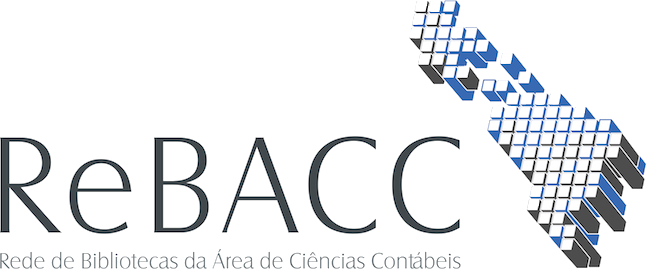Use este identificador para citar ou linkar para este item:
http://rebacc.crcrj.org.br/handle/123456789/3520| Título: | International convergence: analysis of the relationship between the normative process and the composition of the iasb members CONVERGÊNCIA INTERNACIONAL: ANÁLISE DA RELAÇÃO ENTRE O PROCESSO NORMATIVO E A COMPOSIÇÃO DOS MEMBROS DO IASB |
| Palavras-chave: | Convergence. IASB. GAAP Convergence. International Accounting Standards. Convergência. IASB. GAAP Convergence. Normas Internacionais de Contabilidade. |
| Editora / Evento / Instituição: | AnpCONT |
| Descrição: | The IASB, International Accounting organization that leads the convergence of accounting standards, suffers criticism ranging from the creation and formation until the regulatory process itself. Such criticism seek to bring the idea that drives in the preparation of accounting standards and changes end up following a schedule in accordance with the interests of the major countries that finance the organization, as well as their sponsoring companies. Accordingly, the objective of this study is to analyze the accounting standards that have a higher level of inconsistencies between local and international GAAP and assess whether they have changed due to geographic participation of members of the organization. Therefore, it was used as the search basis the GAAP Convergence 2001, which shows the differences between the local and international standards from 60 countries worldwide. It was drawn, then, a database containing such information, updated until 2010, besides a database containing the historical composition of the IASB members for the same period. The rules that were modified by IFRS were also included and the analyzes were performed in a qualitative way. The results show that there is no evidence of loss of neutrality from the participation of the IASB members, taking as a point that the continents with the highest representation does not have a higher level of standards with differences modified by the body through the IFRS, although these continents show a higher amount of local regulatory differences when compared with the IAS and IFRS. Based on the results, it can be inferred that the IASB regulatory process seeks to reduce the differences globally, bringing a set of standards based on the theoretical framework of accounting and which may be applied in a general way, without any differentiation by the organization to the reduction of differences in specific continents. As a suggestion, future research may deal with countries individually and their stages in the convergence process, as well as a possible identification, more specifically, in the standards development process, ensuring that the comments received through the Comment Letters to the IASB have some work on when processed by the body. O IASB, órgão internacional de contabilidade que lidera o processo de convergência das normas contábeis, sofre críticas que vão desde a sua constituição e formação até o processo normativo em si. Tais críticas buscam trazer consigo a ideia de que a condução na elaboração e alterações das normas contábeis acabam por seguir uma agenda de acordo com os interesses dos principais países que fomentam o órgão, bem como de suas empresas patrocinadoras. Nesse sentido, o objetivo deste estudo é analisar as normas contábeis que possuem maior nível de inconsistências entre os GAAPs locais e internacionais e avaliar se elas foram alteradas conforme a participação geográfica dos membros do órgão. Para tanto, utilizou-se como base a pesquisa GAAP Convergence 2001, que demonstra as diferenças entre as normas locais de internacionais de 60 países do mundo. Elaborou-se, então, um banco de dados contendo tais informações, atualizadas até 2010, além de um banco de dados com a composição histórica dos membros do IASB para o mesmo período. As normas que foram modificadas por IFRS também foram incluídas e as análises foram realizadas de forma qualitativa. Os resultados demonstram que não há evidências de perda de neutralidade por parte dos membros do IASB, a partir do ponto que os continentes com maior representação não possuem um maior nível de normas com diferenças modificadas pelo órgão através das IFRS, muito embora estes continentes apresentem uma maior quantidade de diferenças normativas locais quando comparado com as IAS e IFRS. A partir dos resultados alcançados, podese inferir que o processo normativo do IASB busca diminuir as diferenças existentes globalmente, trazendo um conjunto de normas baseadas no arcabouço teórico da contabilidade e que possam ser aplicadas de forma geral, sem que haja alguma diferenciação por parte do órgão para a diminuição de diferenças de continentes específicos. Como sugestão, pesquisas futuras podem tratar de países de forma individualizada e seus estágios no processo de convergência, assim como uma possível identificação, de forma mais específica, no processo normativo, verificando se os comentários recebidos através das Comment Letters ao IASB possuem algum direcionamento quando tratados pelo órgão. |
| URI: | http://rebacc.crcrj.org.br/handle/123456789/3520 |
| Outros identificadores: | http://asaa.anpcont.org.br/index.php/asaa/article/view/129 |
| Aparece nas coleções: | Revista ASAA |
Arquivos associados a este item:
Não existem arquivos associados a este item.
Os itens no repositório estão protegidos por copyright, com todos os direitos reservados, salvo quando é indicado o contrário.

